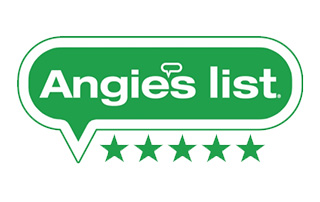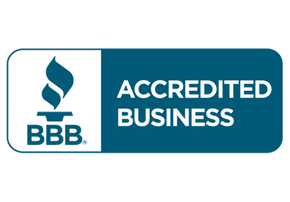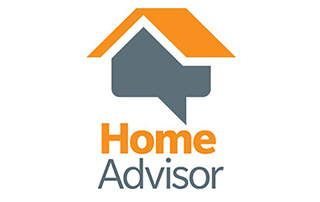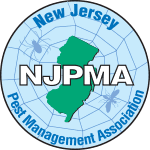YELLOWJACKETS CONTROL

Yellowjackets are found worldwide and are a very common pest during the summer and fall in the USA, there are about 16 species that reside in the country. These flying insects get their names from their typical black and yellow color pattern banded across their abdomens; however, some species can also have white or red markings. Yellowjackets are smaller than bees; measuring only ½ inch long. They have narrow mid-sections, which bees do not have; and are also much less hairy than bees. Yellowjackets are social insects that have annual colonies; these colonies are typically in the ground, but they can also be found in wall voids, attics, eaves, or crevices of homes.
Not sure if you have a yellow jacket problem? Or maybe you want to learn more about how yellow jacket control works. Check out the following information to clarify some questions you may have.
Yellowjacket Library Shortcuts
- Should I be concerned about Yellowjackets?
- Signs of a Yellowjacket infestation
- Why do I have Yellowjackets?
- Can I get rid of Yellowjackets myself?
- Tips to prevent Yellowjackets
Should I be concerned about Yellowjackets?
Yellowjackets are a significant stinging threat; they are not friendly like bees, they can be dangerous and even deadly for people who are allergic. There are different reasons why yellow jackets are considered dangerous or a threat; we have listed some of those reasons below:
- They are aggressive; yellowjackets are more aggressive than other stinging insects and will even attack for no reason.
- They bite; these insects not only sting people; but also bite the flesh in order to get a better grip as they jab their stinger into your skin.
- They can sting numerous times; yellow jackets don’t lose their stinger, allowing them to sting repeatedly.
- They are defensive and territorial; wherever yellowjackets have their nest, they will vigorously defend it as a group. They assign a “guard” to stand watch at the nest opening; if someone gets too close to the nest, they will alert the colony and hundreds of yellow jackets can appear and attack.
- They are venomous; yellowjackets attack with a venomous sting to which many individuals are allergic and can cause bad and even life-threatening reactions.
- They are scavengers; they scavenge for meat and sweet liquids, so they are common at outdoor activities with ample opportunity to sting.
- Severe pain; when yellowjackets sting, it will not only cause allergic reactions in some people; but will also cause a lot of pain to anybody.
Signs of a Yellowjacket infestation
As mentioned before yellowjackets are a dangerous pest, therefore it is important to be aware of the signs that suggest an infestation. We have listed some signs that can help you identify one:
- Yellowjackets sighting; are usually detected when workers are encountered. They may be flying around your yard, garden, house, flowers, or other areas.
- Nests; yellowjackets usually nest underground; however, they can also build their nest in hidden areas above ground, like wall voids, ceilings, attics, etc. Small stones and dirt piling up around the opening of a burrow are clear signs of an underground nest.
- Buzzing noise; yellowjackets are active during the day and can buzz very loudly while building their nest, if you hear crackling sounds in your walls, attic, or rafters, they are probably building a nest in your property.

Why do I have Yellowjackets?
There are a few reasons why yellow jackets may be on your property; the following are some of them:
- Uncovered food outdoors; yellowjackets look for places where they can hide and have a source of food, if they find an exterior area with uncovered food, they will most likely bill their nest nearby. They are mainly attracted to meats and sweets.
- Open trash can lid; another easy access food source for yellow jackets are trash cans, they can find food remnants to feed their young.
- Structural damage or entryways; yellowjackets will find any cracks or entries where they can lay their eggs or shelter to overwinter. They can also bill their nests in abandoned burrows of gophers, moles, voles, and ground squirrels.
Can I get rid of Yellowjackets myself?
There are some pests that can be handled by homeowners, but yellowjackets are not one of them. As it was stated before, this is a dangerous pest since they are aggressive and can attack in packs causing some health issues. Therefore, it is important that a yellow jacket infestation is treated by professionals with the right equipment and chemicals.
Tips to prevent Yellowjackets
Listed below are some tips to help you make your property as unappealing as possible to yellowjackets:
- Caulk any holes found in the foundation and exterior walls of your home.
- Place a tight-fitting cap on all chimneys.
- Place locking lids on all trash cans.
- Keep high-protein foods like meats and pet food indoors.
- When eating outdoors, try to keep food covered at all times and clean up all leftover food and drinks.
- Keep tree limbs, bushes, and shrubs a distance away from the outside of your home.
- Locate garden and compost areas a distance away from the outside of your home.
- Do not drink from open beverage cans; they may crawl inside a can attracted by the sweet beverage.
- Remove yard debris where nests could be established.
- Address holes made by other pests, as yellow jackets barrow these holes to build their nests.
- Yard work and gardening should be done with caution. Wearing shoes and socks and using work gloves will prevent stings on hands and feet and provide time to get away from an unexpected mound.
*If you have had an allergic reaction to a yellow sting, it’s important that you see an allergist-immunologist.

Want a Free Estimate?
Need to Schedule Service?
Have a Questions?
WHAT WILL WE DO?
Our yellow jacket control process typically consists of the following stages:
- Confirm or discard the existence of yellow jackets or nests on the premises through an inspection
- Identify the factors that may be causing and contributing to the infestation
- Offer pest control programs to get the problem under control
- Treat the existing yellow jacket population and prevent future infestations
What our clients are saying
Our Partners and Awards
Service area
New Jersey:
Ocean County
Essex County
Passaic County
Morris County
Hudson County
Bergen County









